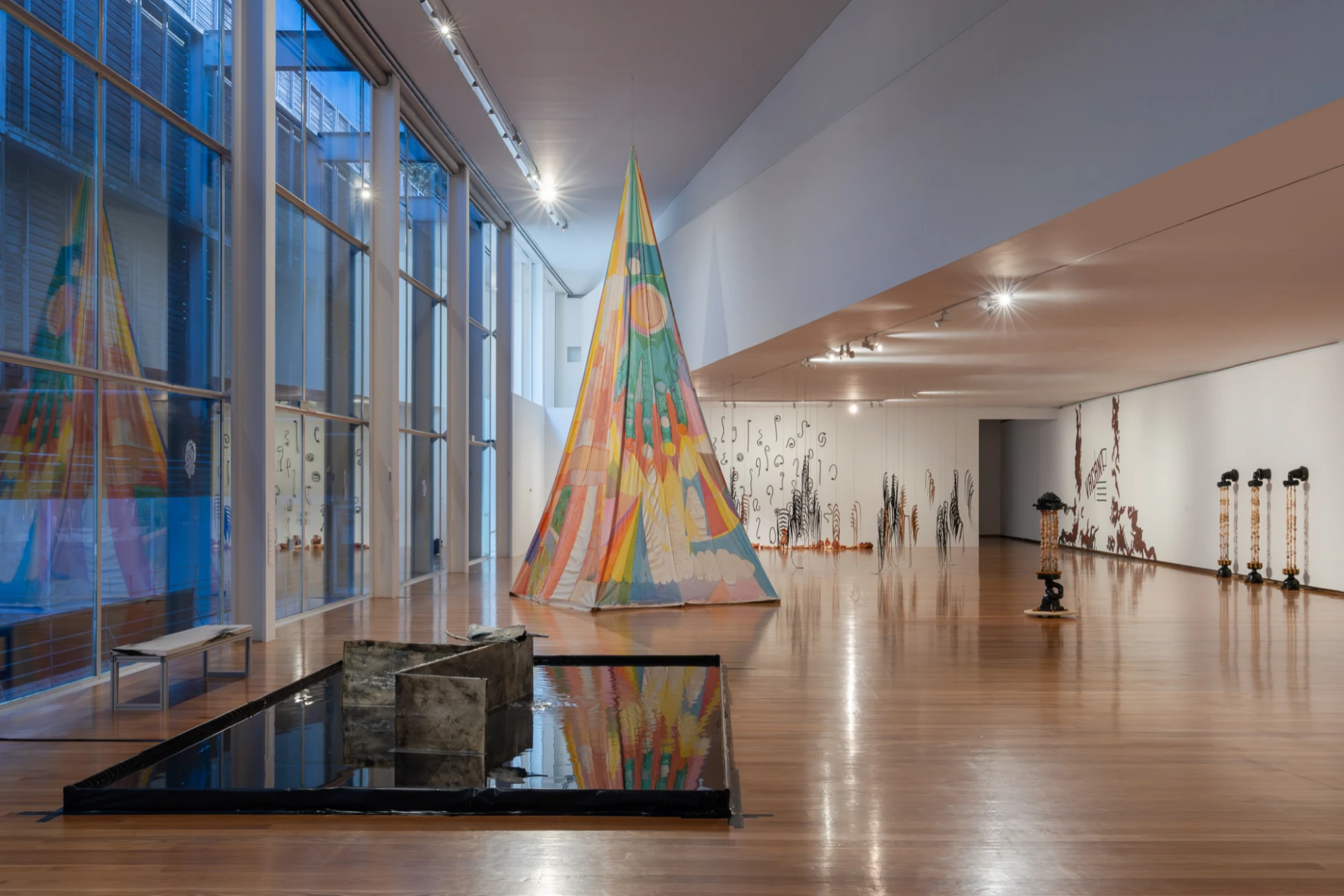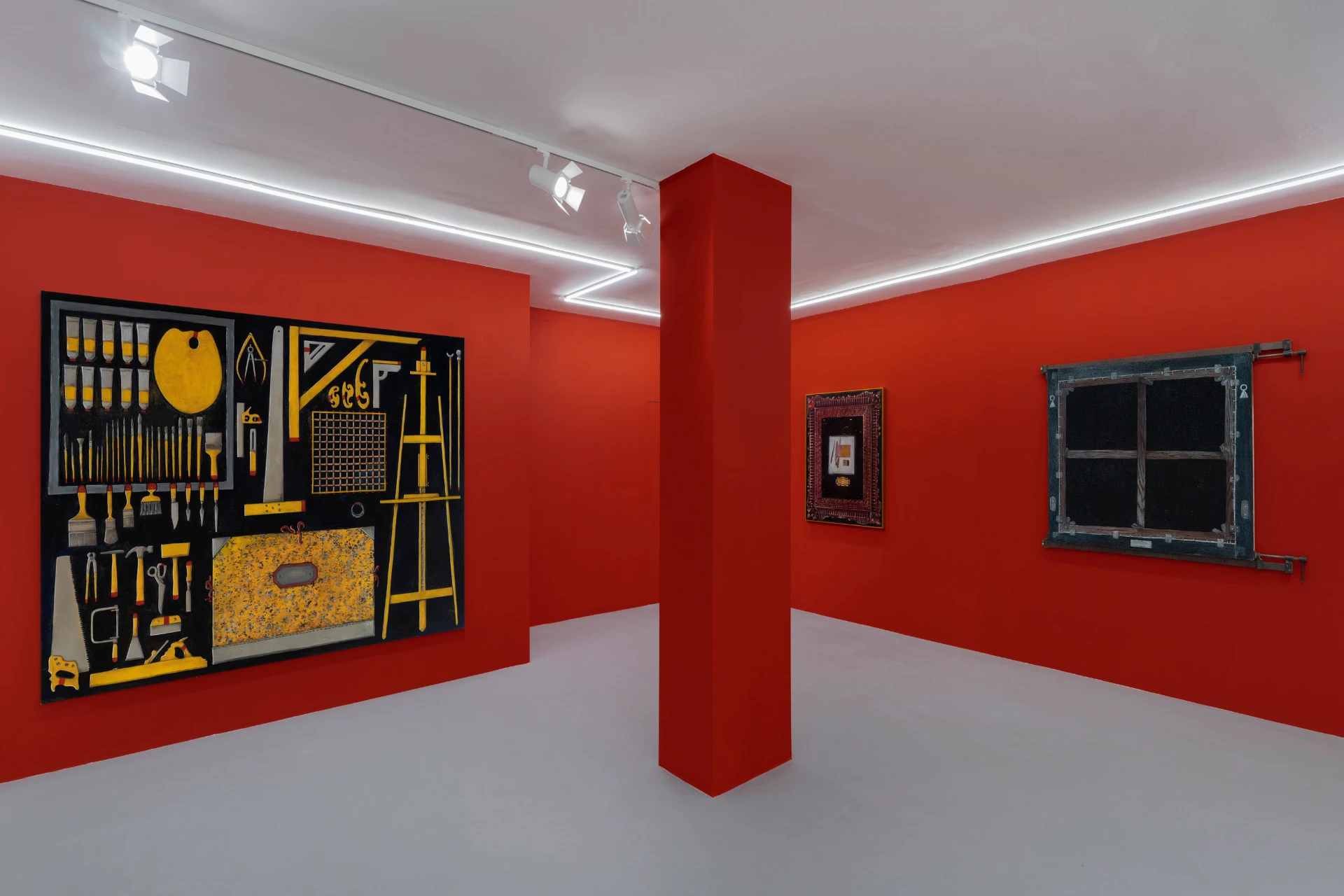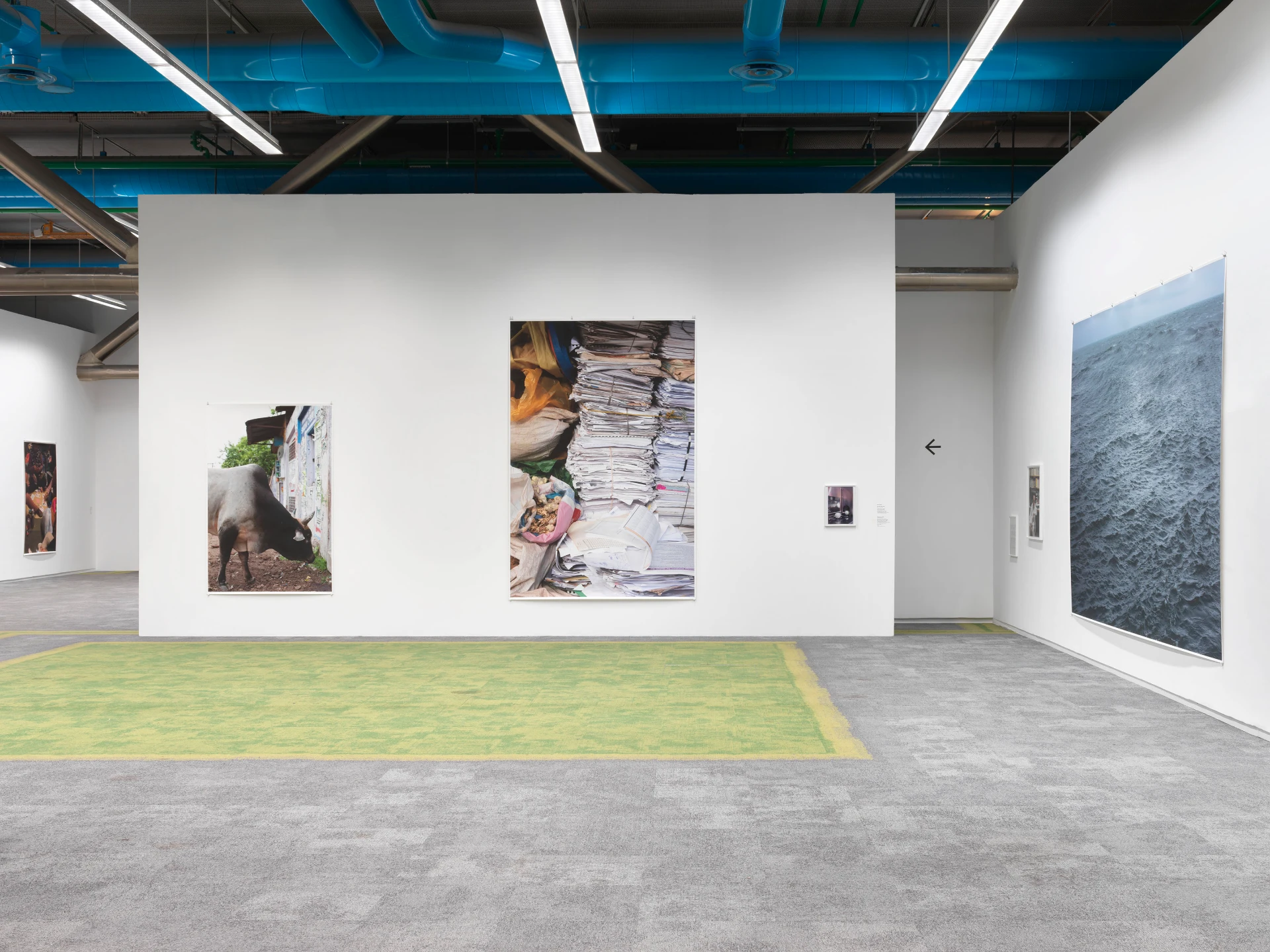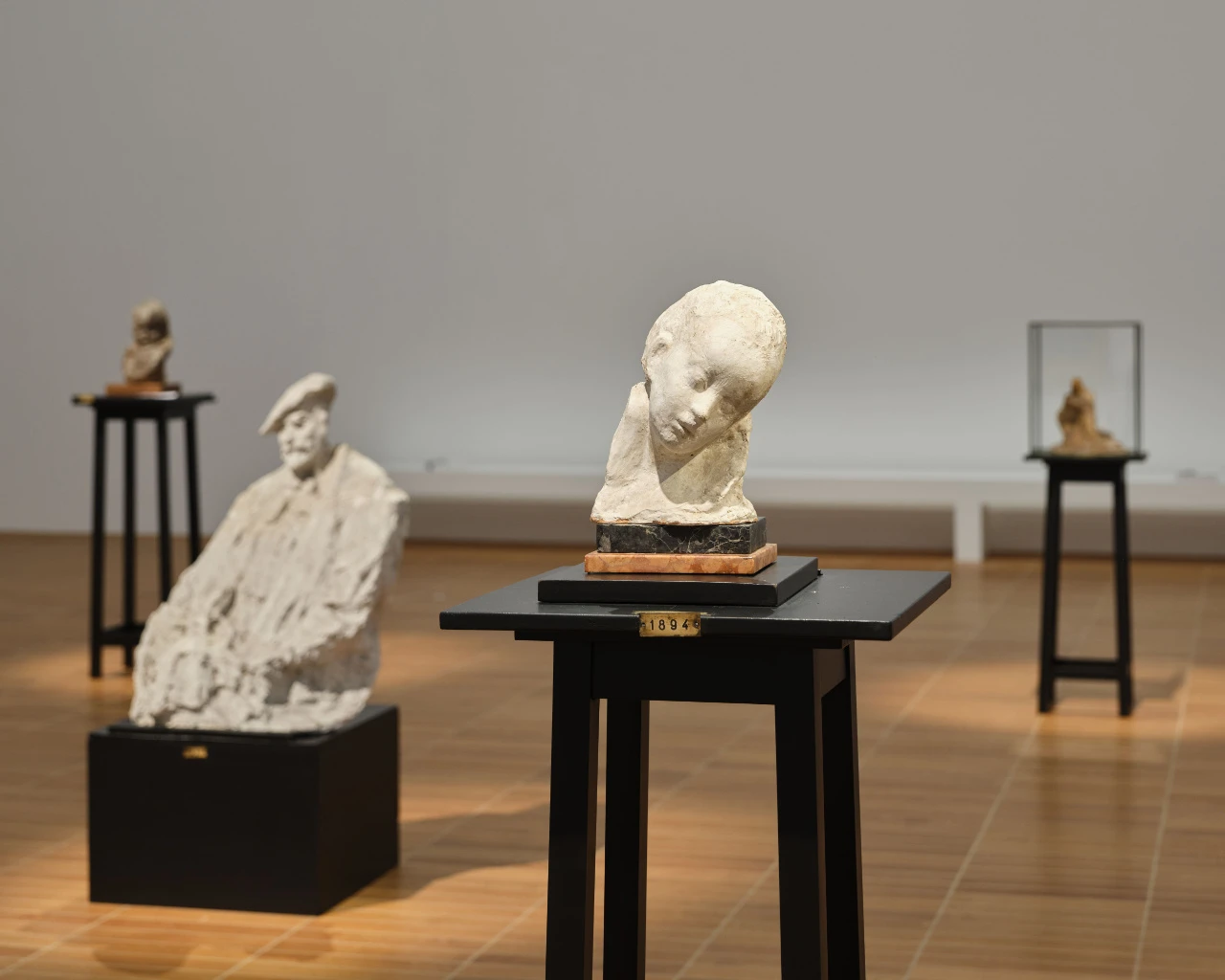article
Exercises in Public Intimacy: Wolfgang Tillmans at the Centre Pompidou
What remains at the Tillmans' show is a porous, flowing installation that transforms the exhibition space into an embodied map of contemporary consciousness. Rather than charting a linear career arc, the exhibition resembles a sprawling, subjective archive—a kind of personal Library of Babel or a spatialized neural network. Astrophysics, nightlife, queer intimacy, ecological anxiety, protest movements, and philosophical inquiry all coexist without hierarchy.
In his first solo exhibition in the French capital in over two decades, Wolfgang Tillmans doesn’t simply install works; he choreographs movement, subtly redirecting the pathways once navigated by the library’s daily flow of nearly 4500 visitors per day (with 2200 seats available to study). With Nothing could have prepared us – Everything could have prepared us Centre Pompidou concludes its exhibition season before closing completely for a major 5-year renovation, but the result is not just an exhibition of everyone's favorite and hero of youth culture, but an inhabited architecture of encounter. This spatial strategy evokes what cultural theorist Giuliana Bruno describes as public intimacy—a mode of relational proximity in which the viewer experiences art not through distanced contemplation, but through a tactile, surface-level engagement. For Bruno, intimacy is not hidden or private, but something enacted through the material contact between bodies, objects, and spaces. In this sense, Tillmans transforms the former library into a site where the personal and the collective coalesce, and where the surfaces of everyday life become charged with aesthetic and emotional resonance.
Installed across the 6,000 square meters of the former Bibliothèque publique d'information (Bpi), the show is a site-specific spacial project shaped by three years of architectural research and institutional dialogue. Significantly, the library was the first library with open stacks where everybody could just take the book they wanted and had been one of the most democratic cultural spaces in France—open to all without identification or registration. The connection between books, photography and intimacy is evident for Tillmans. In his interview with Renzo Piano, conducted in the summer of 2024, he says: “Aside from their civilisational significance, books are sensual objects, a pleasure to hold, to weigh, to smell, to live with. They are a point of connection, a bridge to other human beings. Similarly, I have viewed making photographs as a way of building a connection to other fellow humans across time and space. There is a tangible intimacy in these media objects, a physicality that evokes memory and emotions.”
Wolfgang Tillmans has long navigated and transgressed borders—geographical, visual, and conceptual. From the haunting photographs of the Mexican–US border and the Gaza wall to choreographic studies of bodies in transit, such as the act of removing shoes at airport security, his work repeatedly hovers at the edge of visibility and legibility. Light flickers along these thresholds—literal and metaphorical—while the body, ever vulnerable, performs its passage. The artist’s 2016 exhibition at Serralves Museum in Porto, tellingly titled On the Verge of Visibility, encapsulated this commitment to testing the limits of what can be seen, said, and felt. Walls were always an active space for Tillmans who always considered the wall as a single whole, like an artist's canvas, and saw no point in simply combining images, so he developed his own type of hanging, which was not taken seriously at first. The almost complete refusal of the walls was a real challenge at the Centre Pompidou in Paris, where the artist offered not a retrospective but a total environment.
Tillmans reanimates this legacy by metaphorically and physically removing all barriers, partitions, and checkpoints. The artist constructs a distinct visual and spatial vocabulary through his sensitive engagement with the typologies of tables, cabinets, and furnishings inherited from the library. Varying in depth and form, these elements become compositional tools in a scenography that explores the tension between verticality and horizontality, orientation and reorientation. Throughout his career, Tillmans has consistently redefined the terms of photographic display. At the Pompidou, he enters into a charged dialogue with Renzo Piano’s radical architecture. His swimming pool-like mirrored plinths and tables do not merely reflect but expand the spatial volume, echoing the open communication ducts that define the Centre’s interior. In one subtle intervention, he reveals patches of the library’s original carpet, uncovered beneath later additions and exhibited as a kind of archaeological strata. The ghostly imprints of chair legs, bookshelves, and human movement function as historical residue—material evidence of the thousands of lives and thoughts once circulating through this space. The exhibition itself turns out to be such a unique photoimprint of the multi-layered texture of the library that was once located here.
Tillmans originally envisioned suspending all the photographs from the ceiling and the structural beams of the communication infrastructure, allowing the exhibition to quite literally levitate—existing without walls, supports, or partitions. This radical gesture evokes another legendary exhibition that took place exactly forty years ago at the Centre Pompidou in 1985: Les Immatériaux, curated by Thierry Chaput and Jean-François Lyotard. Conceived as both a philosophical manifesto and an exhibition, it served as an interface for exploring the shifting human condition in the age of emerging technologies.Bringing together artworks, technological artifacts, and scientific documents, the curators examined various dimensions of physical and psychological experience in a technologically mediated world. The scenography was notably innovative: designed to induce disorientation, stimulate all the senses, and encourage interaction. Visitors navigated a non-linear path shaped by suspended screens of varying opacity, while wearing headphones that played an evolving soundtrack responding to their movement through the exhibition’s fragmented zones.
What remains at Tillmans’ show is a porous, flowing installation that transforms the exhibition space into an embodied map of contemporary consciousness. Rather than charting a linear career arc, the exhibition resembles a sprawling, subjective archive—a kind of personal Library of Babel or a spatialized neural network. Astrophysics, nightlife, queer intimacy, ecological anxiety, protest movements, and philosophical inquiry all coexist without hierarchy. This encyclopedic impulse is extended through the inclusion of works by other artists supported by the Between Bridges Foundation, the non-profit Tillmans established in London in 2006 and now runs from Berlin. The exhibition Nothing Could Have Prepared Us – Everything Could Have Prepared Us is, first and foremost, a reflection on knowledge, how it is organized and where its limitations lie. Tillmans’ fidelity to the material traces of time—whether in textiles, skin, or institutional infrastructure—is matched by his long-standing engagement with epistemology. Since 2005, his exhibitions have frequently included the Truth Study Center installations: layered tabletop displays of newspaper clippings, printouts, and annotations. Conceived in response to the rise of religious dogma and pseudoscience well before “fake news” entered the cultural lexicon, these works channel the polyphony of ideological voices into dense visual essays. They ask not what truth is, but who gets to say it, and how. In this sense, the Truth Study Center functions as both archive and mirror, reflecting the crises of interpretation that haunt our present moment. Far from offering clarity or resolution, Tillmans’ exhibition at the Pompidou embraces the dissonance and simultaneity of contemporary life. It is an aesthetic and intellectual ecology where all things are interconnected—borderless, unstable, and urgently real.
Wolfgang Tillmans is hardly underrepresented in the global art world. In 2025 alone, he has mounted four major exhibitions—including a solo show at the Albertinum in Dresden and a powerful collaboration with Boris Mikhailov in Kharkiv. The latter, staged in the subterranean, bunker-like structure of the Ermilov Center, marked a historic first for the two artists, whose friendship spans three decades but who had never exhibited together. In that context, the exhibition became not just a gesture of artistic exchange but a deliberate political act—another instance of Tillmans leveraging visibility as a form of resistance and solidarity. Political consciousness has long animated Tillmans's practice. He has actively launched political campaigns and consistently addressed the social implications of perception and representation. At the Centre Pompidou, this sensibility translates into a space that is not only designed for viewing but for lingering, reflecting, and engaging—a hybrid environment where art assumes the spatial ethos of a library. Visitors are invited to spend time, to stay, to return. The exhibition becomes a living, social organism.
For Tillmans, reality is never unidimensional. It is visual, yes, but also deeply social, economic, political, and corporeal. His lens moves fluidly from the intimate — portraits of galaxy of his lovers and friends, the textures of skin and fabric—to the cosmic: starlit skies, planetary formations, and the poetic accidents of light on photographic paper. His work captures not only the world as it is seen, but also as it is felt and metabolized. Photography may be the structural foundation of his practice, but it is his nuanced spatial interventions—his choreography of scale, sightlines, and surface—that activate the work on an existential level. Images, objects, and ephemeral traces coalesce into a vast, interconnected ecology of the visible and the invisible. A distinctive feature of the Pompidou exhibition is the unveiling of Tillmans’s complete video archive, presented for the first time in an interactive format. Using the original library computers—left in situ at the reading tables—visitors can browse the full database of his time-based work. Some screens play quiet portraits of former librarians, filmed by Tillmans in an affectionate act of homage; others host his video oeuvre in its entirety, a hypnotic collection that resists narrative in favor of atmosphere, mood, and duration. Here, the boundaries between installation and archive dissolve once again. At the heart of the exhibition, a row of glass vitrines—once used to safeguard the library’s fragile ephemera—now houses a curated selection from Tillmans’s personal collection of cultural artefacts. Among them: a copy of Dennis Cooper’s The Sluts; The Magnetic Fields’ 69 Love Songs; a (possibly original) Polyester film poster by John Waters; a worn edition of Edmund White’s Staaten der Sehnsucht: Reisen durch Gay America; and Barbara Kruger’s critical reader Remote Control. The list is far from exhaustive, but telling. These objects function less as a private archive and more as reflective surfaces—mirrors of a life shaped by relentless acts of looking, collecting, and belonging.
In the farthest hall a green laser methodically traverses the dark space, like a giant scanner digitizing the exhibition and its visitors. On a large screen, Tillmans’s long-form film unfolds on a large screen accompanied by his own music, but it evokes not merely a stylized evocation of a nightclub, but rather a speculative environment: a luminous, immersive zone that gestures toward what José Esteban Muñoz once described as a “cruising utopia.” In a sound installation located there, 2018’s I want to make a film, Tillmans narrates a potential project looking at digital technologies. This is not a reconstruction of nightlife as such, but a spatial proposition—a queer imaginary charged with affect, erotic potential, and political promise. In this hypnotic realm of pulsing light and ambient sound, Tillmans stages a reverie of infinite queerness, freedom and intimacy, aligning with Muñoz’s call to reinvigorate the queer political imagination as a horizon, a mode of striving, and a refusal to settle for the present.
The exhibition’s title reflects Tillmans’ enduring preoccupation with the layering of signs and traces—those subtle visual cues that might, in hindsight, help us make sense of life’s unfolding and prepare us for it. Yet, as he acknowledges, reality rarely conforms to our expectations, and we do not always see what’s coming. Central to Tillmans’ practice is the question: What was something like before I noticed it? This deceptively simple inquiry underpins much of his work, infusing it with a quiet, epistemological curiosity. The exhibition thus becomes not merely a survey of past works, but a reflexive gesture: an attempt to look back across four decades of artistic production to ask which images, shaped by an invisible internal logic or hidden poetry, have endured, and which have faded. In this light, the show is not only about visibility, but about resonance—emotional, historical, and cultural. It speaks with particular intimacy to a generation raised in the hyper-visual landscapes of the internet, steeped in the politics of identity and conditioned by the aesthetics of fragmentation. And if the experience of moving through Tillmans’ spatial and photographic world produces an uncanny sense of recognition, it is because he has always been attuned to the undercurrents of the present. Through bodies, through light, through the material culture of longing and intimacy, he traces not just what we see, but how we feel—before we even realize it.
Nothing could have prepared us – Everything could have prepared us, by Wolfgang Tillmans, is at the Centre Pompidou, until September 22, 2025.
BIOGRAPHY
Alexander Burenkov is an independent curator, cultural producer and writer based in Paris. His work extends beyond traditional curatorial roles and includes organizing exhibitions in unconventional spaces, often emphasizing multidisciplinarity, interest in environmental thinking and post-digital sensibilities, encompassing projects such as Yūgen App (launched at Porto design biennale in 2021), a show in a functioning gym or online exhibition on cloud services and alternative modes of education, ecocriticism and speculative ecofeminist aesthetics. His recent projects include Don't Take It Too Seriously at Temnikova&Kasela gallery (Tallinn, 2025), Ceremony, the main project of the 10th edition of Asia Now art fair (together with Nicolas Bourriaud, Monnaie de Paris, 2024), In the Dust of This Planet (2022) at ART4 Museum; Raw and Cooked (2021), together with Pierre-Christian Brochet at Russian Ethnographic museum, St Petersburg; Re-enchanted (2021) at Voskhod gallery, Basel, and many others.
ADVERTISING
Previous
article

11 Aug 2025
Notes on Lucid Reverie – Panorama of Portuguese Contemporary Art
By Ayşenur Tanrıverdi
Next
article

13 Aug 2025
The exercise-works of Pedro O Novo
By Maria Inês Augusto
Related Posts

